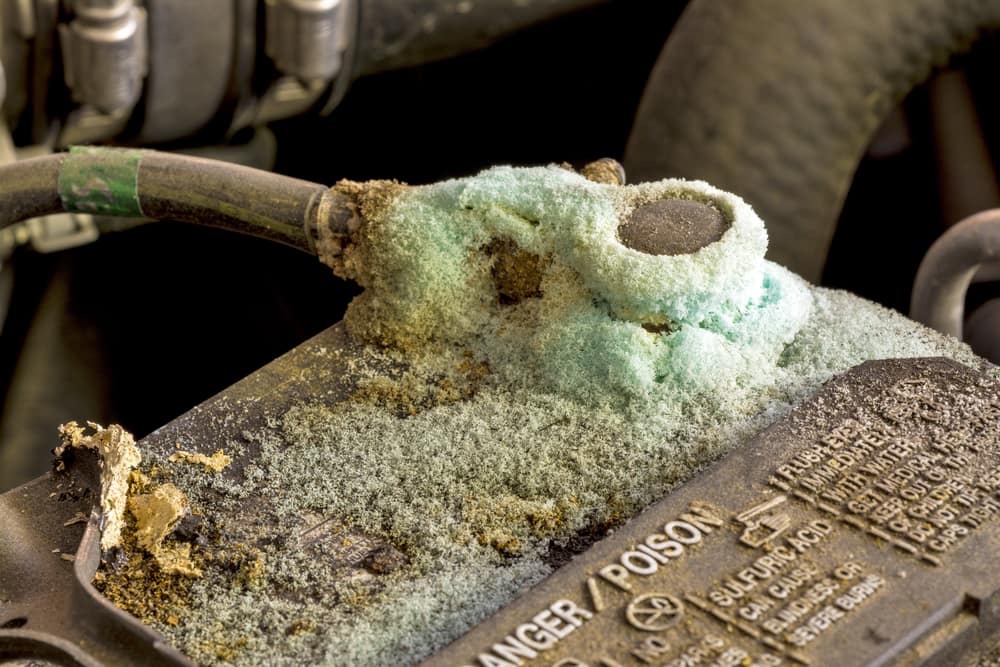When your car refuses to start, it can be frustrating and stressful. It is essential to know whether the problem is with your battery or the alternator. Both the battery and the alternator are crucial components of your car’s electrical system.
As a car owner, it is important to understand how to tell the difference between a bad alternator or battery. In this article, we will discuss the signs of a bad alternator or battery and how to diagnose the problem.
Symptoms of a Bad Battery:
A battery is responsible for providing power to start the engine, and it also supplies power to the electrical components of the car when the engine is off. A dead or weak battery can cause several problems, including:

- Slow Cranking: If you hear a clicking sound when trying to start your car, it could be a sign of a weak battery. The battery may not have enough power to crank the engine, causing it to turn slowly.
- Dimming Headlights: If your headlights appear dim, it could be due to a weak battery. When the battery is not providing enough power, the headlights will appear dimmer than usual.
- Electrical Issues: A weak battery can cause electrical issues in your car, such as the radio or power windows not working correctly. If you notice that some of your car’s electrical components are not functioning correctly, it could be a sign of a weak battery.
Symptoms of a Bad Alternator:
An alternator is responsible for charging the battery. Likewise, powering the electrical components of the car when the engine is running. Here are some signs of a bad alternator:
- Warning Light: If the battery warning light on your dashboard is illuminated, it could be a sign of a bad alternator. The light indicates that the battery is not charging correctly, which could be due to a faulty alternator.
- Dead Battery: If your battery is dead even after a jump, it could be due to a faulty alternator. The alternator is responsible for charging the battery, and if it is not functioning correctly, the battery will not receive a charge.
- Electrical Issues: A bad alternator can cause electrical issues in your car, such as the radio or power windows not working correctly. If you notice that some of your car’s electrical components are not functioning correctly, it could be a sign of a bad alternator.
How to Diagnose a Bad Battery:
There are several ways to diagnose a bad battery. Here are some of the most common methods:
- Battery Test: You can perform a battery test using a voltmeter or multimeter. Connect the meter to the battery terminals and check the voltage. A fully charged battery should have a voltage of around 12.6 volts. If the voltage is below 12 volts, your battery may be weak or dead.
- Load Test: A load test is another way to check the battery’s capacity. A load tester applies a load to the battery and measures the voltage drop. If the voltage drops below a certain level, the battery may be weak or dead.
- Visual Inspection: A visual inspection of the battery can also reveal signs of a bad battery. Check for signs of corrosion on the terminals or a swollen battery case. These are signs that the battery may be faulty.
How to Diagnose a Bad Alternator:
There are several ways to diagnose a bad alternator. Here are some of the most common methods:
- Alternator Test: You can perform an alternator test using a voltmeter or multimeter. With the engine running, connect the meter to the battery terminals and check the voltage. A properly functioning alternator should provide a voltage of around 13.5 to 14.5 volts. If the voltage is lower, it could be a sign of a bad alternator.
- Belt Test: A loose or worn alternator belt can cause problems with the alternator. Check the belt for signs of wear or damage. If the belt is loose or worn, it may need to be replaced.
- Visual Inspection: A visual inspection of the alternator can also reveal signs of a bad alternator. Check for signs of damage or wear on the alternator. If you notice any signs of damage or wear, it may be time to replace the alternator.
Conclusion:
Knowing how to tell the difference between a bad alternator or battery is essential for every car owner. A dead or weak battery can cause several problems, including slow cranking, dimming headlights, and electrical issues.
An alternator is responsible for charging the battery and powering the electrical components of the car when the engine is running. A bad alternator can cause electrical issues, a dead battery, and warning lights on the dashboard.
By following the methods outlined in this article, you can diagnose whether the problem is with your battery or alternator and take the necessary steps to fix the issue. If you are unsure about what the issue is, the next step is to have it diagnosed by a professional.